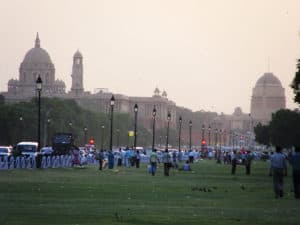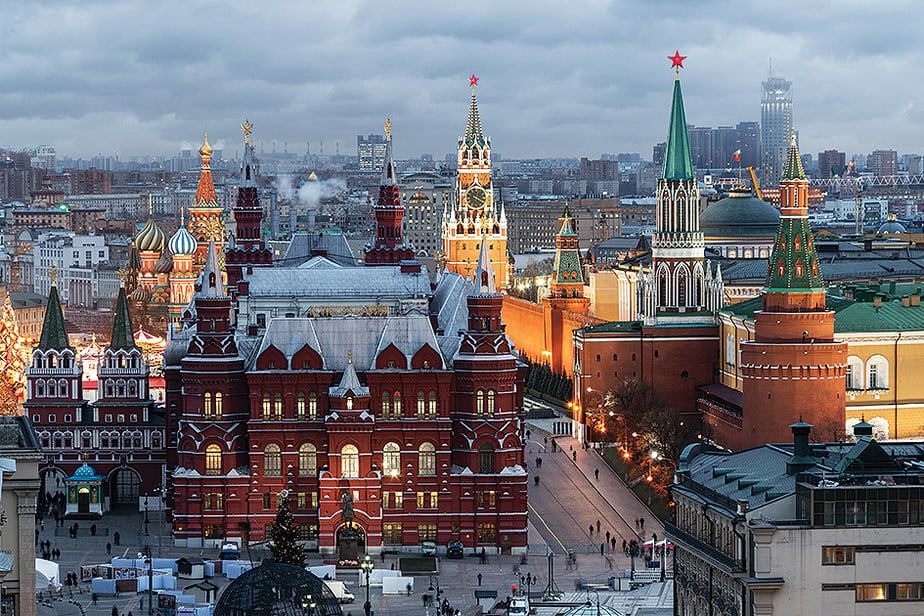Delhi has signed agreements separately with Moscow and Seoul, hoping to match those cities in forging ahead as global conglomerations. Comparisons may be odious but here they are necessary
When you think of Moscow, you envision the Red Square with its famous St Basil’s Cathedral or Lenin’s Mausoleum amidst the crisp wintry air. Think Seoul, and picture skyscrapers, a luminescent city at night and abundant karaoke bars. Back in the Capital of India, no image comes so easily to mind – more of a feeling. The heat, the dust, the traffic, the not so well-managed chaos of the city. This though true, can also be blamed on travel channels, and magazines that fail to reveal the sheer magnitude of Delhi.
The question is: why compare the capital of the former Soviet Union and an East Asian metropolis to the land of contradictions? It’s because Moscow and New Delhi recently made a twin city agreement deal, and unbeknownst to some, they also made one earlier with Seoul.
Delhi’s Deputy Chief Minister Manish Sisodia and Moscow government minister Sergey Cheremin signed the agreement for working together in the fields of education, culture, healthcare, e-governance, tourism, and transport sectors for three years.
The Delhi government to its credit, has been able to promote a diverse range of cultures and bring to the audience ballet recitals from Russia, and even traditional music from China, for what we love best – free. Whether these collaborations will go beyond cultural activities is yet to be seen.
The twin city agreement between Delhi and Seoul covers a range of subjects including pollution control, drinking water, public transport, education and urban development.

We look at key aspects and how the three cities fare and if Delhi can become the next…?
Ecological gaps
When living in the capital city of India, the one thing about the environment which pops up on everyone’s minds is the pollution— Delhi has become the world’s most polluted city.
When you browse through WHO’s interactive map of global ambient air pollution, you understand squarely where we stand. Sitting on the highest category at over 70 in a deep maroon, unforgiving colour is Delhi. Seoul and Moscow lie between 16 and 25, way better than Delhi.
Come winter, every year, the pollution levels become a certain health hazard and the visibility levels come to a deadly low, with planes being cancelled and multiple road accidents. Whether the government is this time equipped to face it will be prayed for, at the least. There will be Diwali, there will be crop burning, issues that perhaps Moscow and Seoul don’t have to deal with. But what they do have like us, is vehicular pollution.
In this respect, Moscow’s Deputy Mayor for Transport Maksim Liksutov, had spoken about the city’s intention to bring in electric buses and stop purchasing diesel buses entirely by 2021. While electric cars have not been as popular as in other European cities, they are on a bigger rise than in Delhi. There are 53 operational e-charging stations in Moscow, to Delhi’s zero (not counting the ones in government offices).
Things may look up though, as Russia’s AK-47 assault rifle manufacturers Kalashnikov have presented its electric car CV-1 to give Tesla — which enjoys the highest number of sales — a run for its money.
In this respect, Seoul scores hands down. In 2011, its plan “An Electric Vehicle Delivery Plan for Seoul” said it would convert 1,77,000 units (6%) of cars into hybrid and 1,21,000 (4%) into electric vehicles by 2020, supplying around 3,00,000 environment-friendly green cars by 2020.
Ministry of Trade, Industry and Energy, has also established electric vehicles charging points in Seoul and other major cities. The Seoul city government is also planning to install 1,00,000 charging tags by the end of 2018, and to make Seoul a city with the best charging infrastructure for electric cars. Not just fixed charging terminals, the city plans mobile charging tags on electrical plugs in public parking lots.
This may be something Delhi would want to learn from if the country makes a more ambitious push for electric vehicles.
Waste disposal
Delhi’s inability to manage its waste disposal is infamous. The five municipal corporations, comprising over 280 wards, generate approximately 14,000 tonnes per day (TPD) of solid waste. Approximately 4,600 TPD is disposed in three of Delhi’s already saturated dumping sites of Okhla, Bhalswa and Ghazipur.
In this regard, Moscow isn’t far behind. Surrounded by 18 landfill sites where 11 million tonnes of waste is dumped every year. In 2014, the government closed 21 of the Moscow region’s 39 landfills after a new law said solid domestic waste could not be stored within a built-up area. Now the government has backed a project to build five waste-to-energy plants that will incinerate rubbish and generate electricity. The first two plants, which can each incinerate 700,000 tonnes of rubbish per year and will each generate 70 megawatts of electricity, are to be built in 2021 in the Moscow region.

Seoul again seems far ahead, with the city adopting an improved policy on solid waste management in the 1990s. According to Seoul’s metropolitan government website, 65% of waste is recycled, 27% incinerated and only 8% landing in landfills.
While some onus lies with the government of Delhi, what is of greater concern is Delhi’s people understanding the need for separating waste — a job largely left for the cities unregulated waste collectors.
The Union Ministry of Urban Development of India has set an ambitious target of October 2019 for converting all organic waste generated in cities into compost or bio-gas, and fertilizer companies have been advised to co-market this compost with chemical fertiliser through their dealers network.
Whether this happens will have to be seen. The Centre has also sanctioned financial assistance of Rs 300 crore to the three municipal corporations of Delhi for effective solid waste management and dust control.
For now, though, if the city continues in its ways it will collapse under landfills, Chitra Mukherjee, head of programmes at Chintan Environmental Research and Action group, told Patriot earlier.
Women’s safety
While women’s safety is not mentioned in reports as one of the key cooperation points, it should be taken into account.
The day a woman can walk freely on the roads at night, that day we can say that India has achieved independence. A famous quote by an even famous leader of India, Mahatma Gandhi. Sadly, until now, India has not truly achieved Independence. What’s even worse is that Delhi is named as the most unsafe megacity in the world.
The Delhi government will start installing 1.4 lakh CCTVs cameras — 2,000 in each assembly constituency — within three months. But manning of these CCTVs should be an important goal to be able to prevent crime and not just help find the culprit after a crime has been committed. There should also be no dark spots and gender sensitisation should be taken up at all levels.
According to the Delhi Police, 2017 saw 2,146 rape cases registered while this year until September 30, there were 1,639 cases registered. Section 354 of the IPC which deals with assault on women saw 3,422 cases registered in 2017 and 2,535 in 2018 till September 30. Under section 509 of the IPC dealing with insult to the modesty of women saw 640 cases registered in 2017 and 468 until September 30.
Comparing statistics with the twin city partners of Delhi, we first look at Moscow, which has been ranked as the world’s fourth safest megacity for women in a Thomson Reuters Foundation survey in 2017. Here we aren’t speaking of domestic abuse, in which Russia has taken a most unwarranted step: making physical abuse punishable by a fine rather than time in prison. The changes mean violence against a spouse or children that results in bruising or bleeding but not broken bones are punishable by 15 days in prison or a fine of 30,000 roubles (£380) if they do not happen more than once a year. Previously, these offences carried a maximum jail sentence of two years.
Going back to safety of women as a whole, Moscow ranked behind Paris, Tokyo and London in terms of overall safety. Moscow also scored high in terms of safety from rape or sexual harassment, coming in behind Tokyo.
In the ‘Safe City’ index from 2017 the South Korean capital is ranked 14, Moscow 41, and Delhi 43. But according to government reports, in 2014 Seoul was the location for 6,064 sexual assault crimes, marking it as the Korean city with the greatest number of sexual assault cases reported.
And while all the three cities’ numbers do not look good, when compared to Delhi they still remain at a low. Our Capital has a long way to go to be able to reach an equal partnership in areas of environment, transport and also women’s safety. Maybe the other two can help us shape up.





